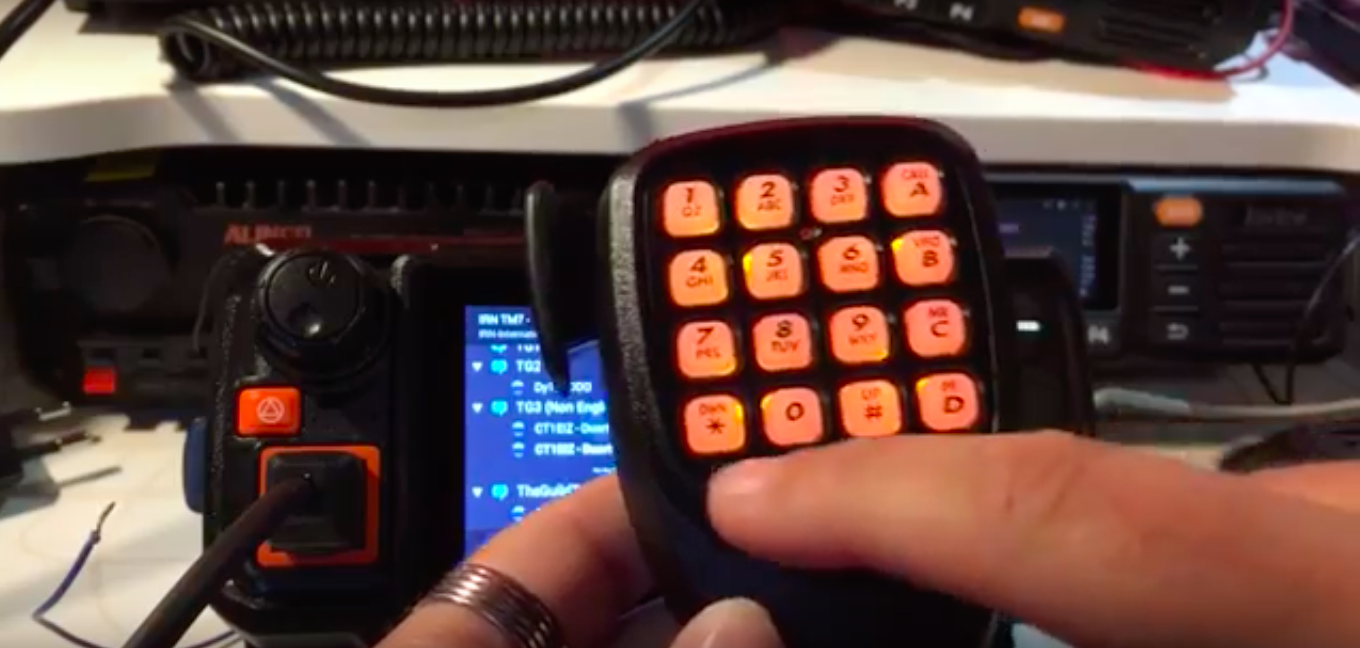
Anysecu 3G-W2 first video review


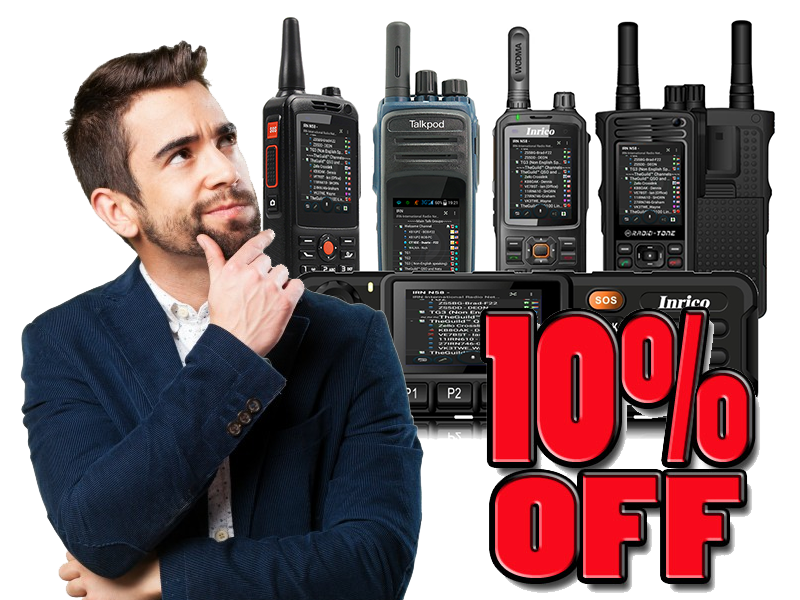
Get any network radio with 10% discount. Still struggling with this technology?
Subscribe our newsletter and learn everything you need to know about Network Radios and get your discount voucher.
Network-radios.com is the first and original website that is 100% dedicated to this amazing branch of amateur radio.
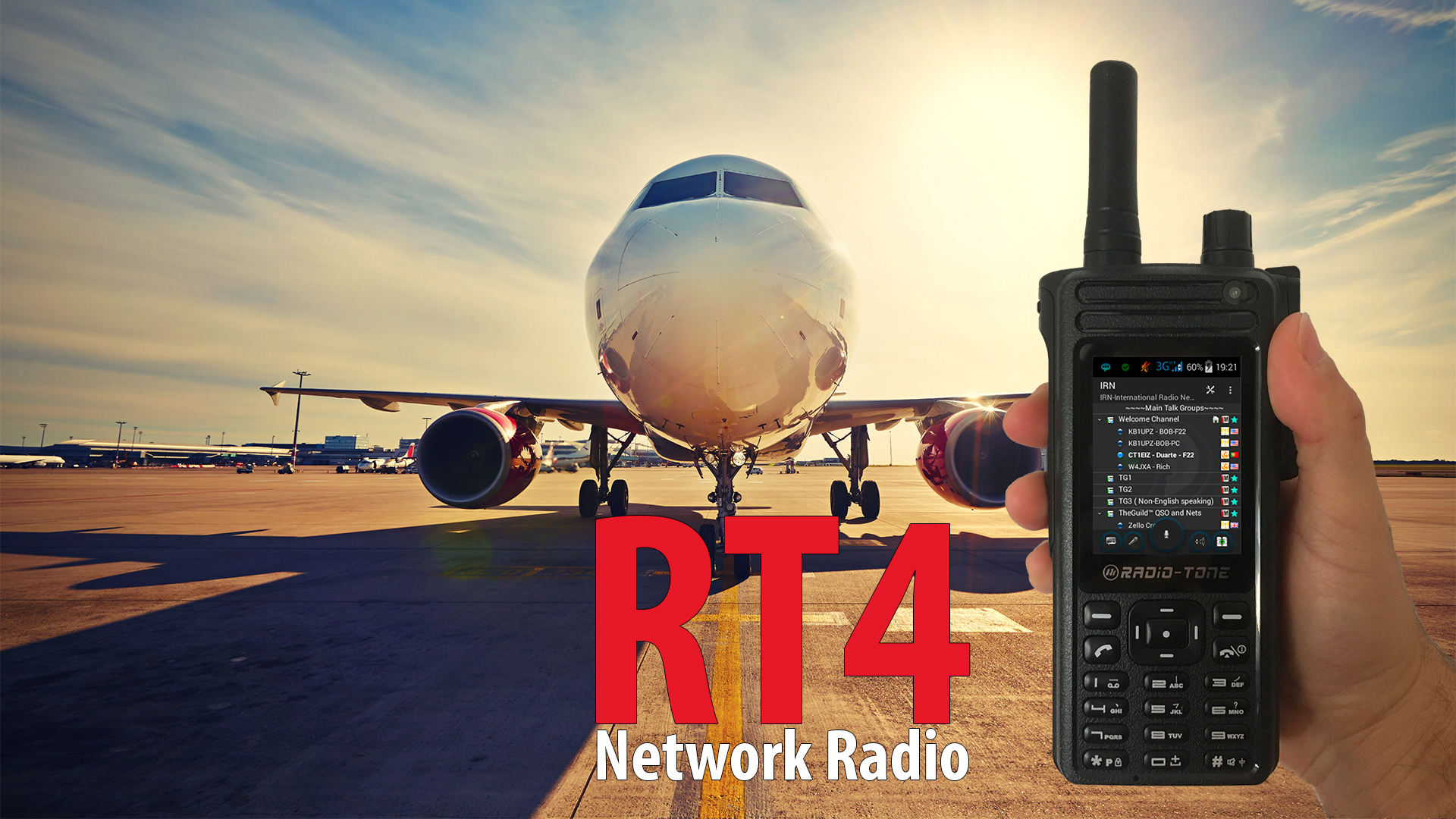
The Radio-Tone RT4 is currently the only 4G/LTE Network Radio that works in US and Europe. Unlike the Inrico T320, it offers US, Australia and EU/UK 3G/4G bands. This makes the RT4 the best travel companion. If you are new to Network radios, then you you could not have a better way to start!
A smartphone for hams
You can use it as a normal cellphone, access your e-mails, browse the internet, keep in touch your ham friends using IRN, Echolink, Zello and other apps.
Long lasting battery
It’s 4600 mAh battery will let you operate your radio for more than a day.
A video review
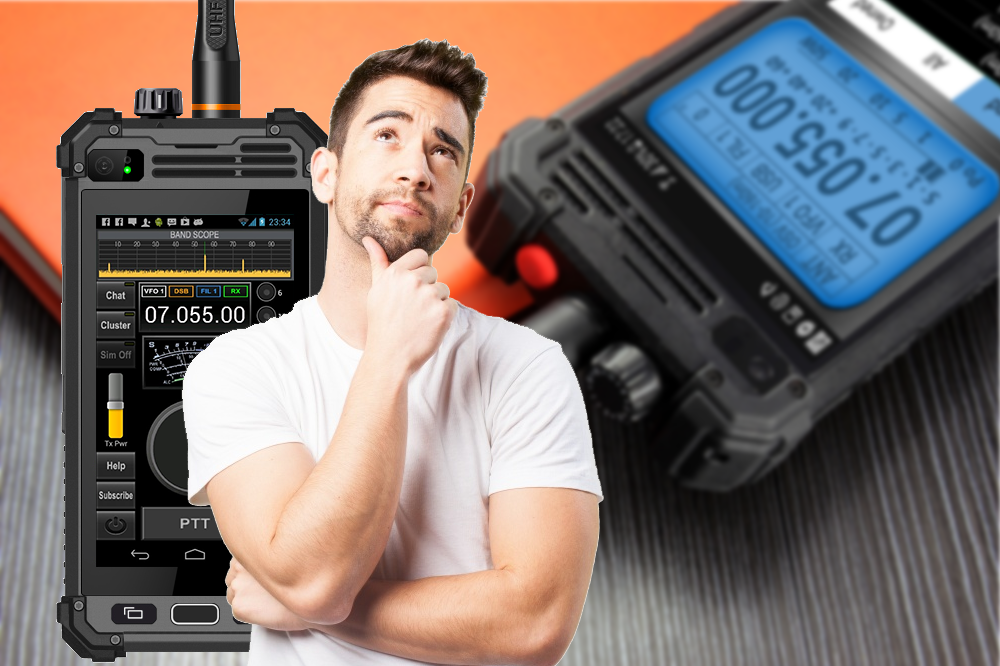
by Chris G7DDN
Earlier this year, I wrote a piece called “It’s not Real Ham Radio”.
It caused quite a stir and has since been disseminated worldwide, broadcasted and quoted in many places and in magazines too.
The basic premise was that, as new technologies come into the Amateur Radio Hobby, Hams often have difficulty adapting to them.
Change demands a response
This should, in reality, not be a surprise. You will be able to think of many instances in your personal and work lives when change has come along, often unexpectedly.
The problem is that change is a little scary – and this is because it demands we react in some way.
3 ways we react to change
Oftentimes our reaction is to dismiss any change and try to remain in the status quo, where we feel we know our “ground” and where we feel secure. The problem here is that any changes then may pass us by – we can easily become mired in what quickly becomes “the past”.
Other times we are forced to take on board things we may not really want to. (Most times though, those things turn out to not be as bad as we had expected, just different.)
And very occasionally, we actually get all positive and embrace change and become quite excited about it.
Time to ask the question in a different way..
So, revisiting my initial article, I thought it was perhaps time to address the question, what actually IS “Real Ham Radio”?
Immediately however, I sense a problem here – you could probably get a different answer to this question from every single Ham in the world!
A few examples
All these examples, and I could have gone on, are individual responses to the question “What is Ham Radio?”
What do you want Ham Radio to be?
To some degree, it seems obvious that “Real Ham Radio” is what you want it to be, what you make it for yourself.
Few hobbies have such a wide range to them, so many avenues to explore – I doubt that any one Amateur has ever managed to visit them all!
FT8, for example, is the latest digimode to appear on the scene and has been taking the Ham Community by storm it seems – although there are many, myself included, who don’t get a kick out of computer-typing modes. I love to see my friends enthusiastic for it however, as it keeps the hobby alive.
So can we define “Real Ham Radio”?
Frankly it is a problem!
I had some lengthy correspondences with a few Hams after my initial article. We had to work hard to find common ground that would satisfy each other as to how to define our hobby.
I had one excellent thoughtful debate with a US Amateur during which we were both challenged to think of how we defined the hobby. We managed to agree for the purposes of our email exchange on something close to this…
“Ham Radio is a hobby where a government-approved license stipulates what we must do to comply with our license conditions. But this relates solely to the emission of RF – anything else involved in the hobby will clearly not require a licence.”
So we pretty much distilled the definition to purely TX-ing on an Amateur Band legal in the country that issues the license and nothing else.
But does that actually define Ham Radio?
I have a client who is a Lecturer at a local University. He is a Doctor and his specialism is Microwave Technology. He has his own research profile and also mentors undergraduates. Like me he holds a G7 callsign. Unlike me though, he has never ever been on the air.
Is he an Amateur? By our initial definition, the answer would be no, simply because he chooses not to transmit on specific portions of RF.
By the way, this man is, in actuality, a true RF “professional” – he is not an amateur (with a small a) when it comes to radio. He knows more than most people world-wide about radio, especially Microwaves.
Let’s try again…
OK let’s amend the definition.
Perhaps we can say “A Radio Ham is someone who holds a license to transmit on specific Amateur Bands, whether or not they choose to do so.”
There – that’s better. We can now count my client in our new definition.
That also covers another friend of mine who is a genius at construction and making transmitters from scratch. He gets his kicks from our hobby by constructing – but he doesn’t ever go on air.
He just tests his home-built radios on dummy loads and then usually gives them away to those in the hobby who enjoy the operating side. It would be churlish to say he wasn’t a “Real Radio Amateur”, even though technically, he didn’t even have to pass his exam to become a Ham for what he gets from the hobby.
So here is another issue – can you be a “Real Radio Amateur”, or engage in traditional Ham activities, and not even take a license exam?
Where next?
This is getting more difficult – perhaps we can go back to the root word of “Amateur” – the Latin ‘amare’ – to love.
The difference between Amateurs and Professionals is that the former practices for love and the latter does it for a profession; in all likelihood they get paid for it.
We “love” radio so that definition might work, might it not? Maybe or maybe not!
After all, CB-ers are also lovers of radio. So are “Freebanders” and a lot of aviation enthusiasts.
In fact, a lot of other hobbies cross over to us in some way – model aircraft enthusiasts use RF in order for their hobby to work at all, for example.
So where are we to go?
We seem to be up a cul-de-sac with no way out.
And now…
So here we are and now Network Radios arrive on the scene and people are scratching their heads as to whether we “accept” them or not, as if we are some “guardians of real radio truth”!
I think the problem is that the technology is making it yet more difficult to define what our hobby actually is – and as newer and newer technologies come on stream, it may yet get even more so!
Perhaps we need to think “outside the box” a little more?
It’s not “Real Ham Radio”… or is it?
Network Radios certainly do not transmit on Ham Bands so wouldn’t fit into definition one.
However they could fit into definition two – you can use them like an Amateur would, if you choose to do so. If you choose to use Ham Protocols, fine, that is your prerogative.
They very much fit into definition 3 in the sense that we can make use of them in ways we see fit for our own “pleasure” and enjoyment.
More definition required!
A quick search for the definition of a hobby comes up with this – “an activity done regularly in one’s leisure time for pleasure”.
Well Network Radios fit that just fine too – and to boot, they also use RF at various points in the chain, albeit on cellular or wi-fi frequencies.
But there’s more…
However, remember that they also can crossover into Ham bands via streaming audio or via remote operation of, for example, HF transceivers. This clearly would require an Amateur Service licence.
Bizarrely then, there is a sense in which Network Radios simultaneously may and may not require a license!
Isn’t this getting more than a little weird? That’s what technological conundrums do for you!
Now there’s a challenge!
As I said at the start of this article though, change challenges us – it challenges the status quo.
Change has come many times in our hobby (this was the main point of my original article) and it is challenging us now in the persona of Network Radios.
Perhaps we need to broaden our definitions; in this way, we can encompass a lot more in our hobby and maybe even reach out to others and grow.
The alternative is to “batten down the hatches” and try to defend our own little corners of the hobby – ultimately, I think that road could conceivably lead us to extinction.
Change? Or Opportunity?
I like Seth Godin’s take on this… (if you have not heard of him, look up some of his TED talks)
He says, “Change is not a threat – it’s an opportunity. Survival is NOT the goal, transformative success is” (emphasis mine)
Paradoxically then, it is actually change that will ultimately drive the hobby forward.
Trying to just “survive” with only what we did in the past will mean we will shrink rather than grow.
Network Radios could well be part of these growth “opportunities” – isn’t it worth embracing them to see if they are?
What do any of us have to lose by doing so? Except maybe our fear of change?
May 2018
One of things that drew me (and probably you too) to Amateur Radio was the ability to make long-distance (or DX) contacts.
Back in the 1960s and 1970s though, for the majority of the population, talking with someone in another country was a complicated and expensive business.
One example…
I recall being allowed by my parents to join in Radio Nederland’s monthly “Happy Station” phone-in on two isolated occasions in the early 1970s.
In the UK, this involved calling the International Operator Service beforehand and booking the call. You were not allowed, for whatever reason, to dial it for yourself in those days!
You gave the number you wanted to call to the operator and tried to explain it would be good if they could call it at a certain time as it was a phone-in, but in truth, you were in the lap of the gods – you had to wait your turn in the queue!
Eventually though the Operator would call you back and then dial the international number for you. At some exorbitant cost, you were eventually put through (or not, in the case of the phone-in programme as the number was usually engaged by then – sheesh!)
Ham Radio – Something Special
So becoming a Radio Amateur in those days was not only a way of accessing a modern up-to-date technical hobby, it was also a way of using your radio skills to talk to people in far-off climes, learn about world geography, and receive those magical QSL cards that proved to your friends that you had achieved something rather special and that you really hadn’t made it all up!
You were somebody as a Ham!
UK-to-UK was impressive too
Even talking with other operators in the UK was quite something.
Before the days of Motorways (Freeways for our US cousins, Autoroutes in Europe) a journey across the whole country could easily take several hours. I specifically remember a journey my family made to the seaside in Devon in 1973 which took the best part of 8 hours on the old “A” roads…
As a Ham in those days, even to talk with a station in Devon, well, it felt like talking to someone on the other side of the world!
Kings of the Airwaves
So being a Radio Amateur back then was truly like being a “King of the Airwaves” – the world was literally your oyster!
When CB Radio and 446 MHz came along, it was easy to differentiate Ham Radio from those services – they were designed as short-range radio only and, unless conditions were exceptional (which they occasionally were on 27MHz!) they did not normally sustain long-distance propagation.
Those services were no threat to amateur radio as a result – and sadly, partly because of this, too many Amateurs at the time looked down on CB-ers – it wasn’t “real radio” and its operators were “inferior” and “didn’t understand proper radio”. (Heard that before anywhere, by the way?)
The tables have turned!
Now fast forward to today – and the tables have very much turned!
The Internet means that pretty much everyone has unfettered access to worldwide communication, in a variety of forms.
Text, documents, photos, audio, video – you name it, it can pretty much be sent worldwide and at relatively small cost.
In reality, the new Kings of the Airwaves in 2018 are…. all of us!
Radio Amateurs have now been joined by everyone else!
Old fashioned?
Is it any wonder then that Ham Radio is all too often viewed these days (by people outside the hobby at least) as old-fashioned, fuddy-duddy and the preserve of old men who prefer to live in the past?
No wonder we have an identity crisis – no wonder it is difficult to attract new blood!
If the best we can offer is “you’ll be able to help out with emergency communications when a natural disaster or war devastates your area” it doesn’t sound overly attractive!
Author’s Note: Please understand that this is not to denigrate those that do provide this service by the way; I am simply trying to show reasons why our hobby is not as attractive as it used to be – I have every respect for those that serve the community selflessly in such a manner, they are heroes in every conceivable sense of the word.
Perishing computers – they’ve ruined the hobby
Like it or not (and I too have a love-hate relationship with them) computers have revolutionised both society and consequently our great hobby too. And they are going to continue to do so.
Network Radios (which we can think of as “pocket SDR computers with a PTT button” as that is what they are) are simply one more evolutionary part of the journey.
They allow us to access the richness and colour of Internet propagation, while existing in a package that we already understand and can therefore use.
Now we can work other Hams anywhere they have a connection to the network, if that is what we choose to do.
It’s rather like using the Internet as a massively combined set of repeaters, only they are not exclusive to Hams anymore – we share that service with the rest of the population.
Resistance?
And perhaps this is one reason there is resistance to this movement.
There was, and still is to a great degree, an exclusivity about holding a Ham Radio licence.
I remember working extremely hard for mine. I was, and remain to this day, very proud that I achieved it (with a Credit and a Distinction in the two papers I sat, by the way, as well a pretty flawless 12wpm Morse Test ;))
But in 2018 and beyond, a licence to transmit on increasingly noisy bands that require large antennas, which in turn causes friction with neighbours and conflicts with restrictive covenants, seems increasingly irrelevant to many Hams.
As a result, it appears that many have voted with their feet and left the hobby altogether.
A growing hobby, but not as we know it?
Network radio does not suffer from these problems however. And though we may not regard it as “pure” as Ham Radio was in the past, it is helping keep the hobby alive.
Indeed, if what I am seeing is correct, it is actually growing it!
Every day, I am hearing Hams coming on the Network saying things like…
“I’ve been on the radio more in the last week that I have in the last 10 years.”
“I never thought I would use Ham Radio again till I came across this channel.”
“This has completely rejuvenated my hobby.”
“I haven’t got my Ham licence yet, but I’m learning a lot from talking with you guys and I am going to enrol on the next course.”
A lesson from Ancient Rome?
What was it that was said about Nero – that he “fiddled while Rome burned”?
Regardless of the historical accuracy of that statement, I wonder if there is a sense of something similar happening within our hobby.
Are our traditional bands gradually slipping away from us under piles of noise?
Are people leaving Ham Radio because “it isn’t what it was”?
Does the thought of erecting a new antenna sound less exciting than chatting with the family on social media or checking your news feed?
If the answer to any of those is yes, then let me ask, are Network Radios possibly one way we can piggy-back on Internet propagation and bring our hobby further into the 21st century?
Running out of time…
If it is, or even if it isn’t, we had better be quick with something!
Two decades of this century have almost gone by and with arguably more than 50% of Amateurs unlikely to be on this planet by the end of the next two decades, time has been running out for the hobby for some time already…
Radical solutions?
No one is suggesting that Network Radios are the answer to all the issues the hobby faces. Clearly they are not.
But they are already playing an increasingly growing part in the hobby and a positive one, from what I am experiencing.
We lose precisely nothing by embracing what they can do for us – and they just may be an opportunity that we cannot afford to pass up.
Catch you “on the network”?
May 2018
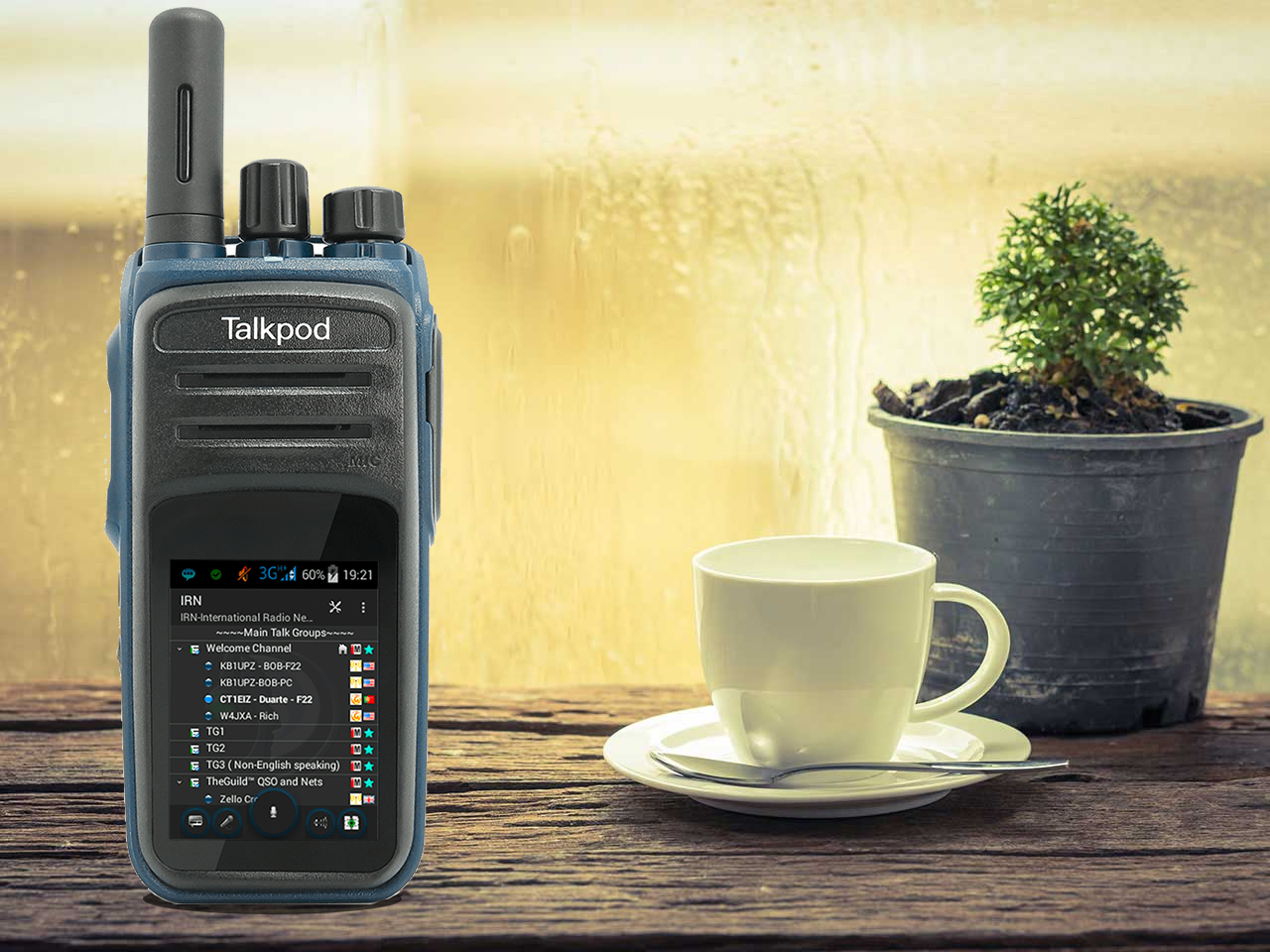
by Chris G7DDN
My main device since I got into this whole Network Radio phenomenon has been the Talkpod N58.
This is not perhaps the most popular radio from a sales point of view – the Inrico T320 seems to be the big seller just now (and yes I have one of those too, and an Inrico TM-7!)
But I have a very soft spot for the Talkpod.
Why so?
Firstly the build quality is definitely the best I have experienced on any Network Radio so far. To say it is rugged is a bit of an understatement really – I have never owned a radio quite so tough!
Secondly, the fit in the hand is exemplary – just like an HT should feel, in my opinion.
Thirdly, the audio has to be heard to be believed! When I did a presentation on Network Radios recently at my local club, the audio from the little Talkpod filled the large club room completely – and it was not even on full volume at the time. Outdoors it is unbelievable!
Issues?
However the Talkpod was rushed to market at the very end of 2017, and, as is often the case with anything “computer”, the firmware was a little “threadbare” at launch.
I can forgive the old version of Android and the limited memory as they do not impact my use with the radio one jot. There is still plenty of memory for all the apps I might need and they work as expected under Android KitKat. I don’t need or use a second SIM card or SD card either.
The things I had trouble with were mostly oddities like, the clock reporting the wrong time unless I did a reset. The battery percentage saying 1% when I knew that really could not be possible! Not knowing what was happening when I seemingly thought I had turned the radio “off”. Annoying things rather than issues that upset the use of the radio.
The only major issue was the volume control, which though positively loud, sometimes couldn’t actually go low enough for more “clandestine” use.
New Firmware
Well I now have a “new radio”!
Talkpod have, just a few days ago, released a new firmware (EU) and new firmware (US) which seems to address a lot of those niggles.
To be completely fair, Talkpod have released a few firmwares since January but the latest does seem to address more issues than before.
So what’s new?
Well a lot of the new stuff is probably “under the hood” updates, but there are a few visible (audible?) differences.
You actually can’t display the battery percentage now, which is one way of solving that issue – perhaps the correct percentage meter will make a return in the future?
When you turn the unit off now, instead of going into Airplane mode without telling you, it gives you a very useful option to either go into Airplane mode or to completely power off instead, which is far more useful and user friendly.
The volume control is much improved too, though it could still do with a little more control at the lower volumes for my liking. However, that can be “tweaked” in the engineering menu, as described on this very website – though the values given in that article are certainly worth experimenting with (in true Ham tradition!)
It is useful advice too to use the paid version of the Button Mapper software to control the media volume. Android seems to have 3 or 4 different volume controls, only one of which is for traditional volume as on a radio – Button Mapper allows me to always use the “Media” volume control mapped to the physical knob.
Still in love?
All in all I still love my Talkpod – arguably it’s not so easy to use as a phone as other Network Radios, as it has no keypad (though it still works with a touch screen), but for my use case, which is as a Radio-like HT, it is perfect!
It won’t be leaving my shack for a very long time. Here’s to another “new radio” in a month or two’s time. I hope you are listening, Talkpod!
© April 2018

by Chris G7DDN
I had a lively conversation with one of my best Ham friends the other day – and it got me thinking again… (always a dangerous thing!)
It’s not Ham Radio!
We were discussing one of the big talking points about Network Radios; the problem it seems to give some people that they do not generate RF on Amateur Bands on their own.
My friend was arguing that using a Network Radio was not Amateur Radio, though when he talked about such devices accessing IRN and signals coming out on RF links via Echolink, he was happy to admit that it then could be Ham Radio, at least in part, because one’s voice would be coming out on, for example, an amateur repeater somewhere.
For him though, IRN to IRN or Zello to Zello was definitely “not Ham Radio” because no RF on an Amateur Band was generated.
I totally get this argument – it is impossible to disagree that Network Radios do not directly generate “Ham RF” or work directly on Ham bands.
But I think that this is not the only issue here, as I will come to in a moment…
You’re not an Amateur unless… what?
He went further still however and argued you are not “being a Ham” unless you are actually transmitting on Ham Bands.
His reasoning was that if you use CB, you are a “CB-er” and if you use Zello, you are a “Zello-er” and neither of these constitute any form whatsoever of Amateur Radio.
Again I totally understand this, but again for me this doesn’t completely hold up.
Why not?
Let’s see why I think things have changed.
For most of the history of Ham Radio, it was clear that Hams used only the allocated bands in the electromagnetic spectrum. This was in part because they were granted to us by governments for experimental purposes and, frankly, that is all there was!
Interestingly, many hams through history have not necessarily been particularly interested in operating at all – their main interest may have been circuit design and/or construction.
They only ever came on the air when they were testing something that involved having to transmit and the choice of band may well have meant little to them. They could have been anywhere on the Shortwave Spectrum in truth, but had to stick to allocated Ham Bands, for obvious reasons.
Others may have been into antenna design – and again only came on to the Amateur bands to conduct relevant aerial tests.
But I doubt whether any of these hobbyists saw themselves not as Hams until they actually transmitted RF…
And what about callsigns?
Our callsigns are very much part of our identity as Hams.
Rather oddly, I see myself as G7DDN whether I am washing up, driving my car, or on holiday – it is almost “part of who I am”. It is strange that a government allocated identifier can have this effect on us!
To make matters worse, I am even called “DDN” by my ham friends and club members – I call other club members by their suffixes too! Even my debating friend above calls all of his friends (they are pretty much all Hams!) by their suffixes.
Why? Because our very identity as people is, in part, wrapped up in our callsigns, even when we are not specifically “generating Amateur RF”.
Into the 21st Century…
Now this gets interesting when the Internet arrives on the Ham scene in the 1990s.
Suddenly we have a new form of propagation and a revival, after many years, of the very term “wireless”. But this is not exclusive to Hams anymore.
Anyone can use this short-range wireless radio – anyone can access the internet – anyone can have DX “Contacts” of a sort – hence the crisis of confidence Ham Radio has been grappling with for some years…
Does that mean though that the likes of Zello and IRN are not “valid”?
Does that mean Hams should absolutely not use these resources using their callsigns, because we are not transmitting on a specific Amateur Band, for example?
It’s about choice!
I would have thought it is up to us as individual hams to decide how we want to use the new forms of Internet propagation.
As I outlined in my recent article, “Taking a Break”, in my local club, we have set up a Zello channel. It is private, password protected and moderated. But it is used just like any Ham Radio channel with correct Amateur protocols etc.
When used with Network Radios (handheld SDR computers with PTT buttons), it is not long before it “feels” like Ham Radio in every way.
Ask someone who’s used one for any length of time… PTT buttons on handhelds take away the feeling of using an Android device; chunky units in one’s palm are just like any other HT; PTT-style comms remove any vestige of “phone-like” feel, but we get the advantages of crystal-clear audio together with the benefits of modern social media, such as photo ID of members, (great for getting to know people!) ability to replay “overs”, ability to moderate and self-police in appropriate ways.
Is our Zello Group “Ham Radio”? If you define it ONLY by generating RF on an Amateur Band, then no. But it certainly feels like it…
Is there another definition?
In the 21st Century, is generating “Amateur RF” the only way to define Ham Radio? 50 years ago that may have been an easier question to answer – now, I’m not so certain…
Natural forms of Propagation are only open to the traditional Ham Bands and radios – equally the new forms of Internet propagation are only open to computer-based “radios”. Is it not just a case of “horses for courses”? Use the right apparatus for what you trying to achieve?
The fact that Hams are playing with crossing over between these devices and internet forms of propagation is even more fascinating!
D-STAR and other modes have been part of this experimentation since the first digital commercial ham radios came out in the late 1990s.
And it’s only a hobby!
The word Amateur comes from the Latin “Amare” – to love.
In other words, anything Amateur is done for the love of it. Amateur Radio is a hobby we are involved with (hopefully!) because we LOVE radio in all its forms.
But Zello (and IRN) is also a form of radio.
Yes, it might use 5GHz or 900MHz, indeed we might not know exactly what frequencies we are using at any one time, but RF is being generated. (I am assuming use of a wireless device of course!)
Splitting Hairs?
Put another way, if I have a 10 minute conversation with a fellow Ham on Zello, and then I repeat that conversation verbatim for another set of 10 minutes on 2 metres, why should one be considered “valid” and the other not?
If the only thing that validates it is the fact that it is on 2 metres, I think we need to ask if we are not beginning to “split hairs”.
It’s technology that has caused the problems – we never had to address questions like this in the past.
CB and 446MHz were very much separate from Ham Radio, but the advent of new technology is what is causing new (almost philosophical) questions to be asked about our hobby and where technology is taking us.
If you read my articles regularly, you will know I think this is not a bad thing.
Keeping an open mind is surely a good thing? A closed mind maybe less so?
But I love Ham Radio!
I do! I love Ham radio in all its forms – Zello/IRN to me is another “form” of Ham Radio, maybe not on a specific government-allocated Ham band, but to all intents and purpose, it feels like it.
I am certainly not going to pooh-pooh it – just because it is sending a certain number of cycles per second into my local atmosphere. I love learning how radio works and constructing things, but why should that stop me communicating with my Ham friends and using Ham protocols, via 2.4 GHz Wifi if necessary?
When I use Zello and IRN, I am still being “G7DDN” and I use Ham protocols accordingly. I don’t have to maybe, but I do, especially as our club Zello group has our own home-grown rules to say we should do so.
It was so much easier without the Internet!
Ham bands were Ham bands, broadcast bands were broadcast bands, numbers stations were numbers stations and jammers were jammers.
Now the internet has come and ruined everything by making the fullness of the radio experience available to everyone, Broadcast radio, Spy radio, Business radio, Emergency services radio, Hobby 2-way radio and now it’s even “infected” Ham Radio. 🙂
We don’t have to let new technologies be polarising though. We can still stand up for and use “true” Ham Radio and simultaneously embrace Network Radios.
We can say, “OK this is not direct Ham RF but is something we can work with and use for our own ends.”
Perhaps the strangest quirk is that, if the Internet had been around when Amateur Radio first began, I wonder whether my best Ham friend and I might not even be having such a discussion today!
It’s a thought…
© April 2018
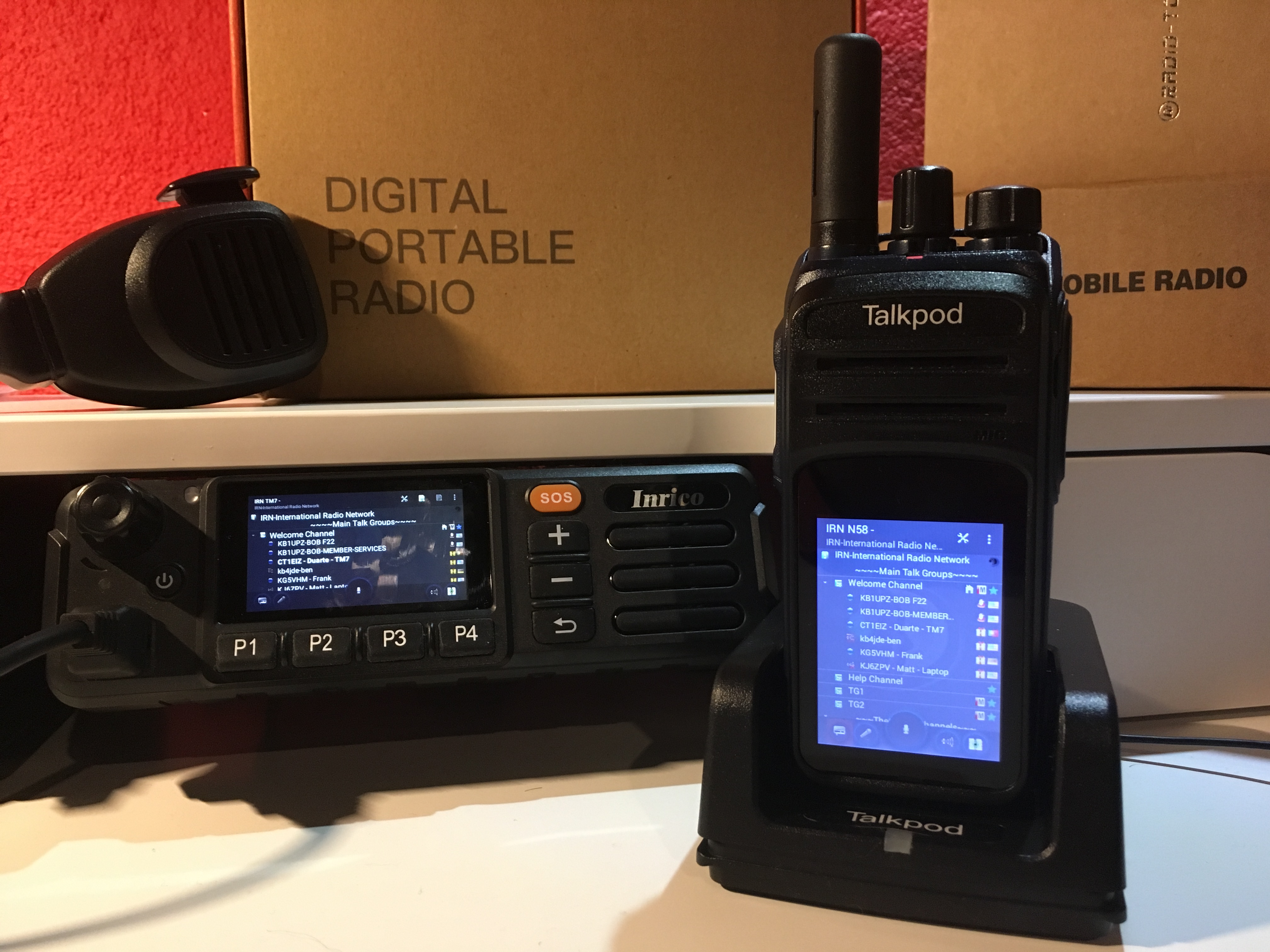
Some 4G SIM cards will not support 3G-only radios. If that’s the case, using a small trick, you can make the Android radio think it is 4G and still allow it to run 3G, using a 4G-only SIM.
Here, is the 4-step procedure:
1 – Dial *#*#3646633#*#* (This will enter the engineer menu)
2 – Now, select Preferred Network Option
3 – In the drop down list, you need to select 4G LTE/WCDMA/GSM. Then, save and reboot the radio.
4 – Once done, just insert a 4G SIM in the first SIM slot and you may keep the second SIM slot empty.
Your device will now run on 3G speed, connected to the 3G network but using a 4G-only SIM card.
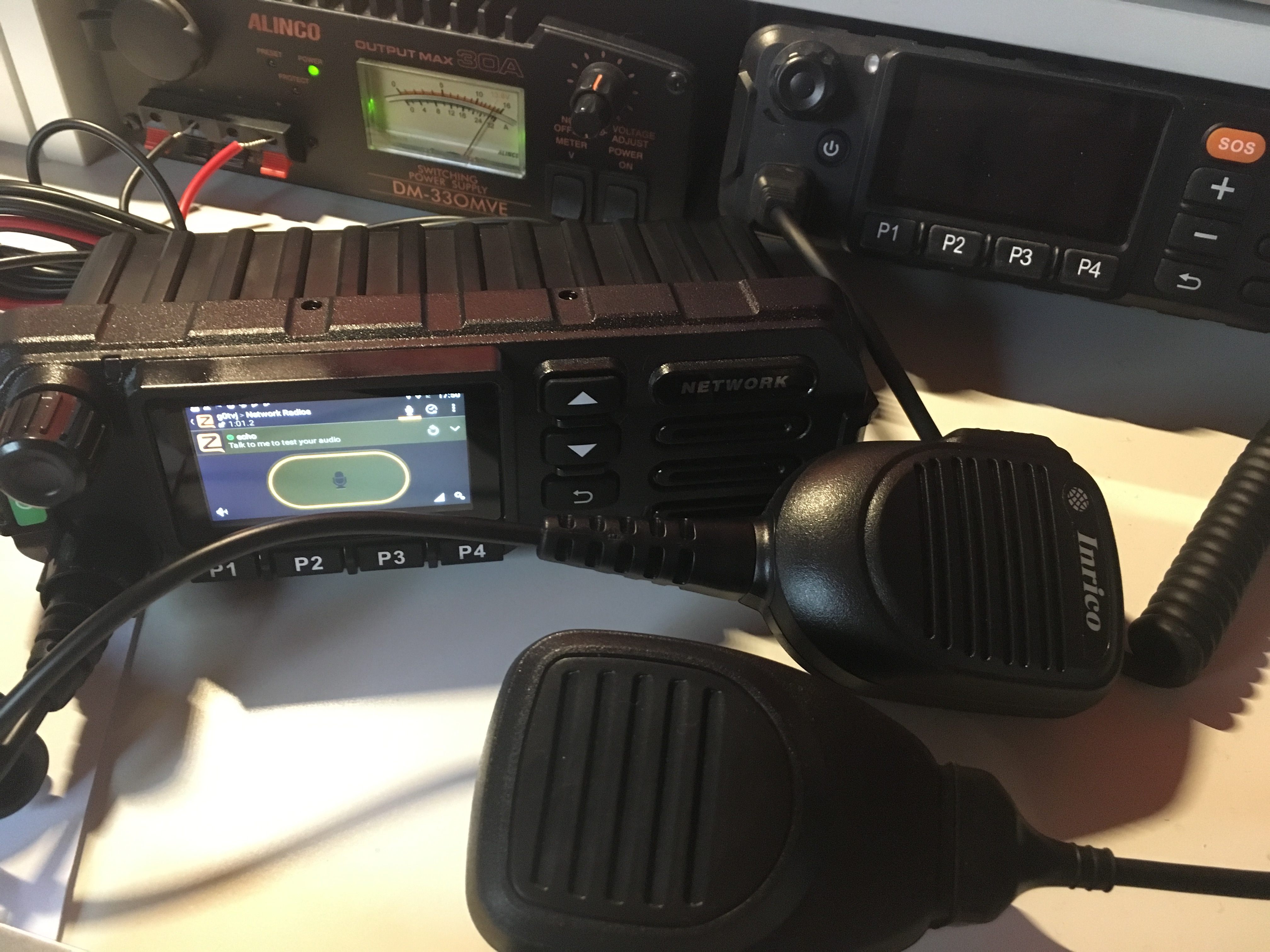
This will improve some reports of poor microphone audio of the Inrico TM-8
Upgrade the radio with this firmware and follow these instructions. It will also remove a “waterfall” noise. Then, you can increase the gain like this:
Go the “phone” app and dial: *#*#3646633#*#*
This will enter into Engineer Menu
Then slide the top bar to “Hardware Testing”
Go to Audio, Normal Mode and change Type to “Mic”
Choose Level 4 and adjust value to 255 then click on “set”.
This has worked for me. Some audiophiles said that after replacing the microphone electret capsule the results were even better.
And you are done!
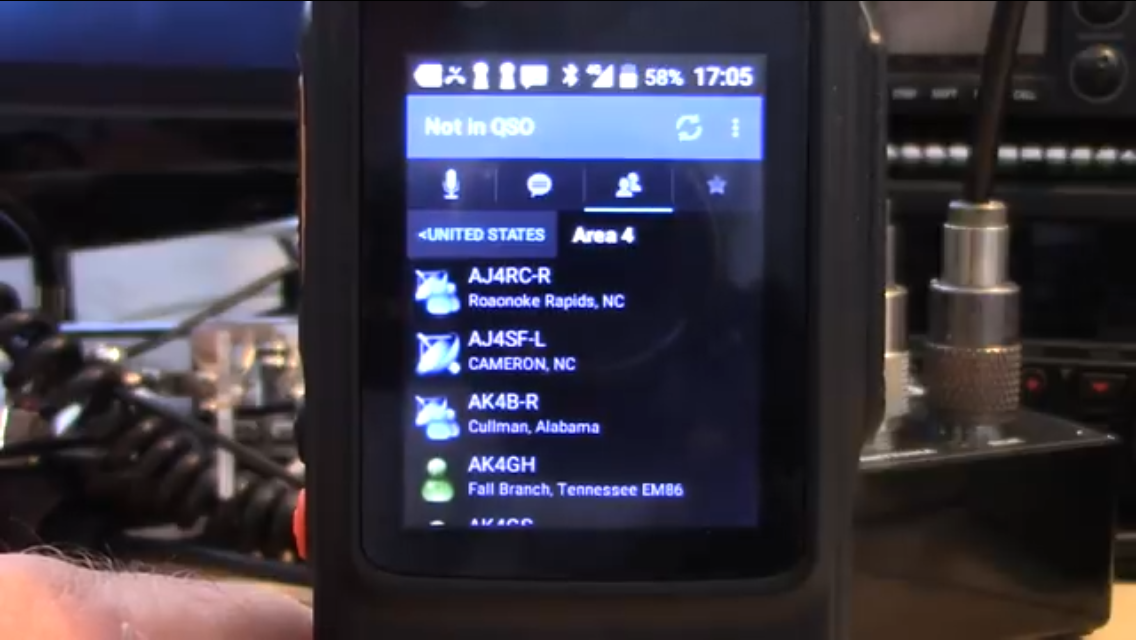
Watch a full video review on the Inrico T320 made by Hamradio Concetps.
As usual, Eric makes an amazing in-depth analysis of the T320 and how it can be used in the various new digital modes.
Watch the video here.